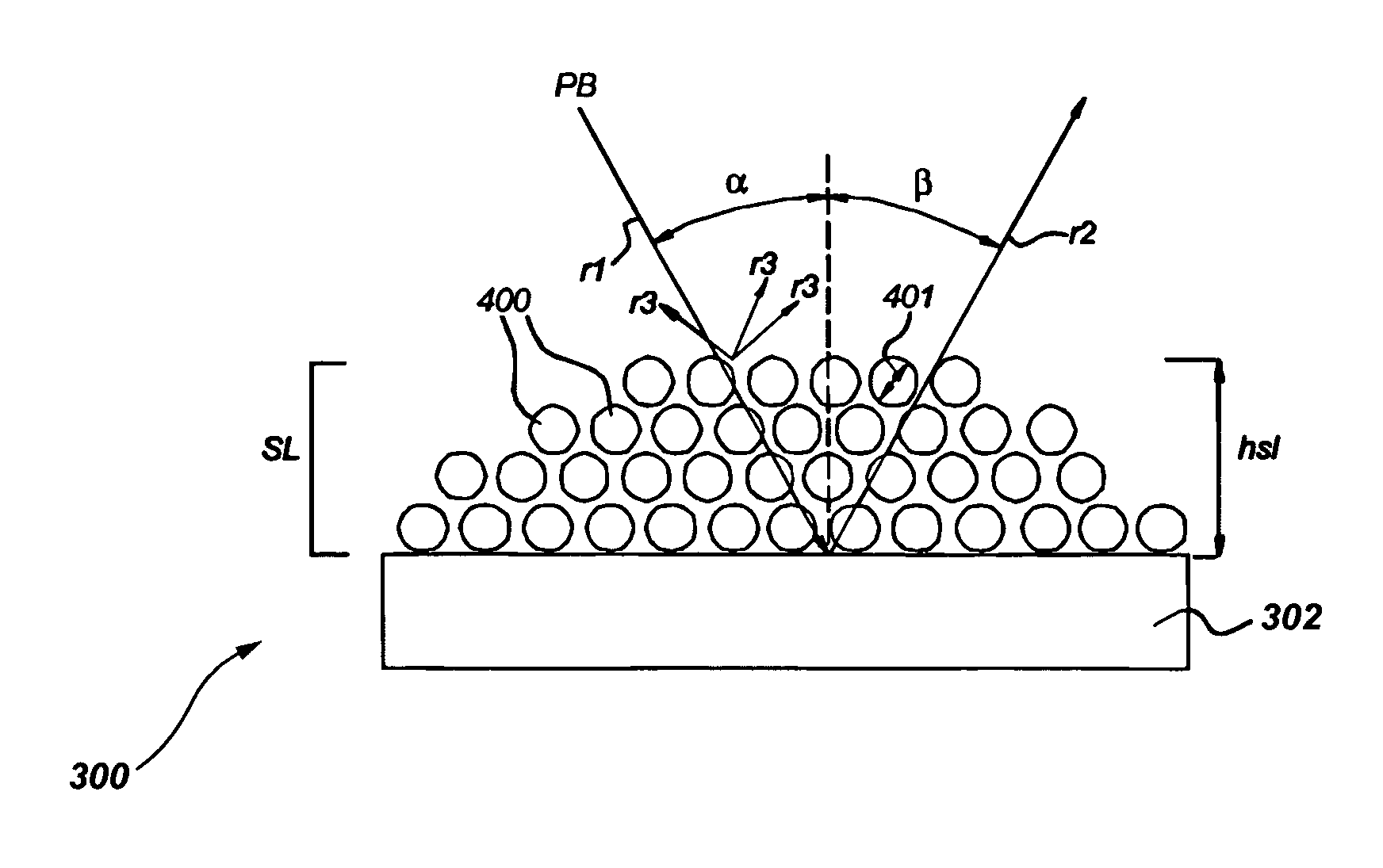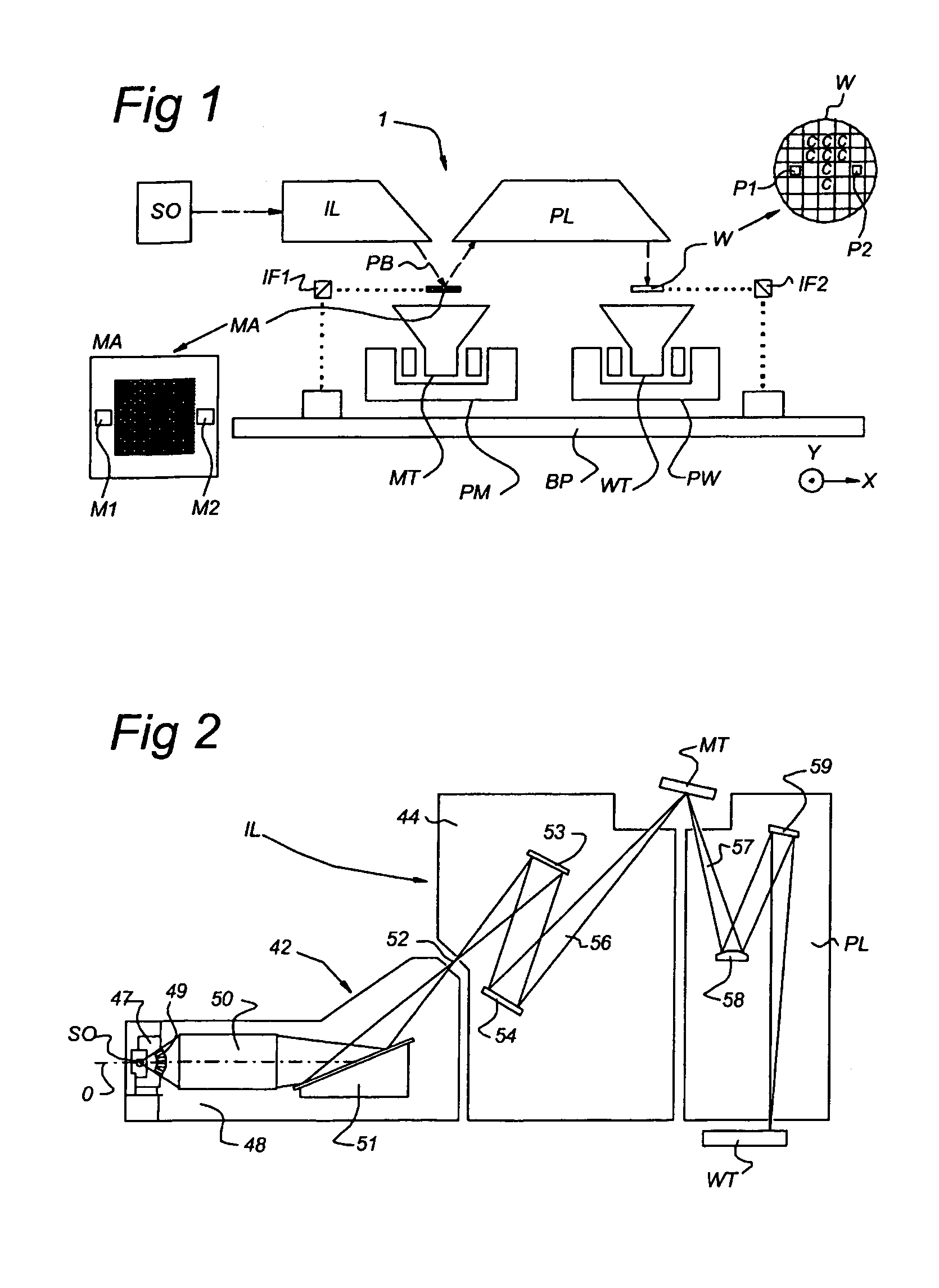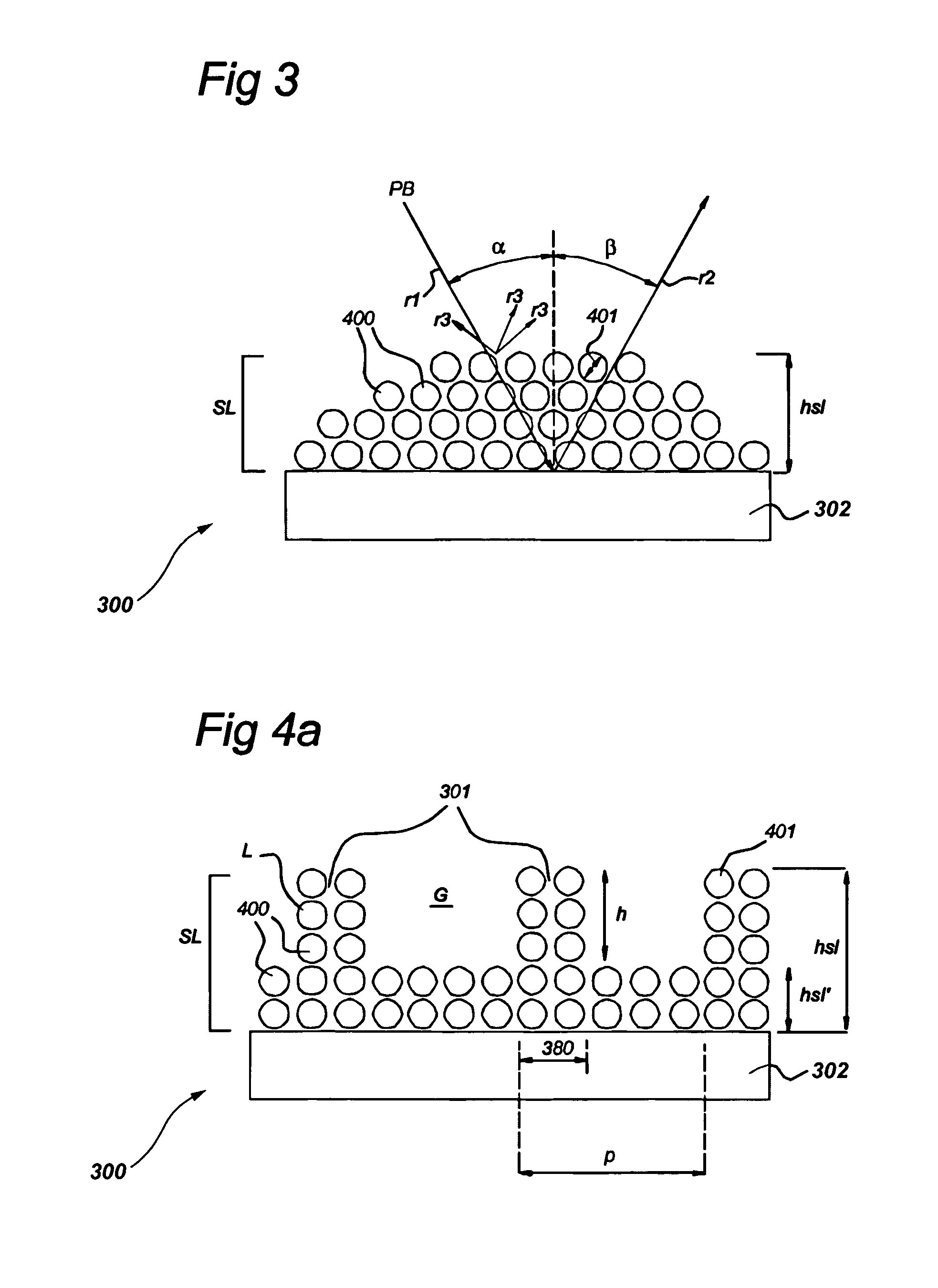Optical element, lithographic apparatus comprising such optical element and device manufacturing method
a technology of optical elements and lithographic apparatuses, which is applied in the direction of stone-like material working apparatuses, printers, projectors, etc., can solve the problems of high thermal stress and cracking, unwanted exposure of resists, sublimation and oxidation in high power levels, etc., and achieve the effect of reducing or eliminating radiations and reducing radiation intensity
- Summary
- Abstract
- Description
- Claims
- Application Information
AI Technical Summary
Benefits of technology
Problems solved by technology
Method used
Image
Examples
Embodiment Construction
[0052]FIG. 1 schematically depicts a lithographic apparatus according to a particular embodiment of the invention. The apparatus includes an illumination system (illuminator) IL configured to provide a projection beam PB of radiation (e.g. UV or EUV radiation). A first support structure (e.g. a mask table) MT is configured to support a patterning structure (e.g. a mask) MA and is connected to a first positioning device PM that accurately positions the patterning structure with respect to a projection system (“lens”) PL. A substrate table (e.g. a wafer table) WT is configured to hold a substrate (e.g. a resist-coated wafer) W and is connected to second positioning device PW that accurately positions the substrate with respect to the projection system PL. The projection system (e.g. a reflective projection lens) PL images a pattern imparted to the projection beam PB by the patterning structure MA onto a target portion C (e.g. including one or more dies) of the substrate W.
[0053]As her...
PUM
| Property | Measurement | Unit |
|---|---|---|
| wavelength | aaaaa | aaaaa |
| thickness | aaaaa | aaaaa |
| diameter | aaaaa | aaaaa |
Abstract
Description
Claims
Application Information
 Login to View More
Login to View More - R&D
- Intellectual Property
- Life Sciences
- Materials
- Tech Scout
- Unparalleled Data Quality
- Higher Quality Content
- 60% Fewer Hallucinations
Browse by: Latest US Patents, China's latest patents, Technical Efficacy Thesaurus, Application Domain, Technology Topic, Popular Technical Reports.
© 2025 PatSnap. All rights reserved.Legal|Privacy policy|Modern Slavery Act Transparency Statement|Sitemap|About US| Contact US: help@patsnap.com



